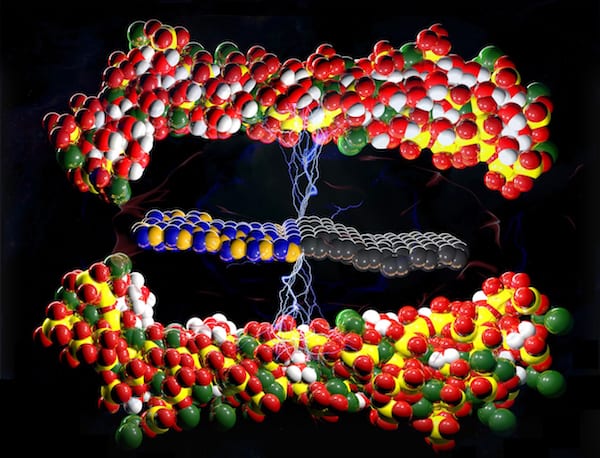Rice University-led simulations show unique ceramic could act as a sensor for structures
A ceramic that becomes more electrically conductive under elastic strain and less conductive under plastic strain could lead to a new generation of sensors embedded into structures like buildings, bridges and aircraft able to monitor their own health. The electrical disparity fostered by the two types of strain was not obvious until Rice University’s Rouzbeh Shahsavari, an assistant professor of civil and environmental engineering and of materials science and nanoengineering, and his colleagues modeled a novel two-dimensional compound, graphene-boron-nitride (GBN).
 Ceramics with networked nanosheets of graphene and white graphene would have the unique ability to alter their electrical properties when strained, according to a researcher at Rice University. The surprising ability could lead to new types of structural sensors. Illustration by Rouzbeh Shahsavari
Ceramics with networked nanosheets of graphene and white graphene would have the unique ability to alter their electrical properties when strained, according to a researcher at Rice University. The surprising ability could lead to new types of structural sensors. Illustration by Rouzbeh Shahsavari
Nano-infused ceramic could report on its own health

